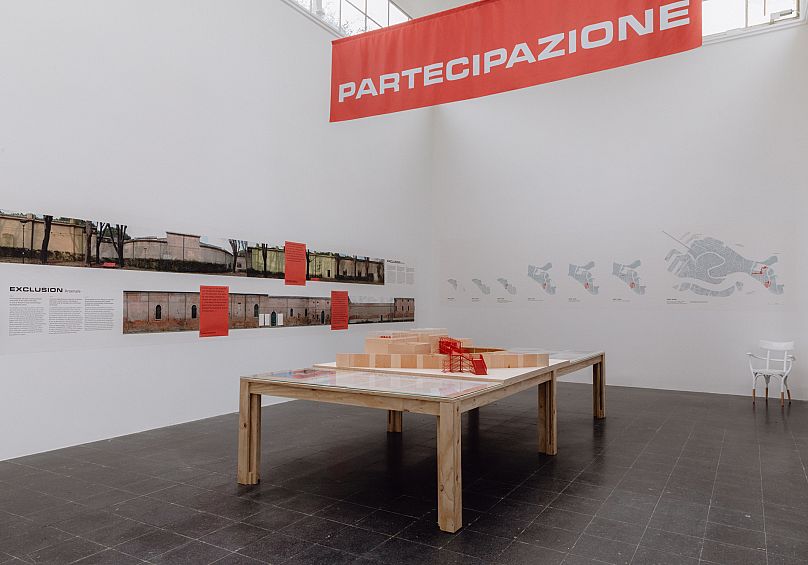The proposed installation, titled Partecipazione / Beteiligung, was given a hard no from Venice authorities.
Austria's pavilion at the 2023 Venice Architecture Biennale opened to the public last weekend as an incomplete project.
The proposed installation, titled Partecipazione / Beteiligung, was given a hard no from Venice authorities.
Ironically, this rejection actually proves the point that the Austrian pavilion’s curators were trying to make.
So why was the pavilion so controversial?
Austrian pavilion to give free access to Venice residents
The Austrian pavilion is situated in the Giardini at the northeastern border wall that separates the Biennale from the city. Over the wall is the area of Sant'Elena, a mainly residential zone of Venice.
Architecture collective AKT and Viennese architect Hermann Czech proposed building a bridge as part of the installation that would link the city neighbourhood to half of the pavilion.
The idea was to give residents of Venice free access to the space (although not to the Biennale as a whole). This area was to be “assigned” to the population of Sant’Elena as a place for urban initiatives and social exchange.
Does the biennale benefit residents?
The idea of the Austrian pavilion was motivated by mounting criticism from local community and activist groups that the international exhibition does not benefit the city’s population.
The project would have quite literally given space back to the surrounding city, a reversal of the expansion over the last decades of the Biennale zone.
In the first room of the pavilion, a display of imagery and descriptions details how the international exhibition has expanded and usurped space in a city where land is limited.
Local initiatives have criticised the exclusive use of space and called for the Giardini and the Arsenale to be opened up to residents all year round.
“[This] would, as well as benefiting Venice’s citizens, make the link between the Biennale and Venice stronger and more dynamic,” reads a quote from the authors of newspaper Il Giornale dell'Arte displayed in the installation.
“We are profoundly committed to preventing the parts of the Arsenale not occupied from being transformed into a shell for trade fair activities and the Biennale exhibitions, which can only be accessed by paying an entrance fee,” reads another comment from Forum Futuro Arsenale.
Austrian Pavilion vetoed by Venice
Upon presenting their project to the Biennale and city authorities, the curators of the Austrian Pavilion found their ideas refused.
Minutes from a meeting, posted up in the installation, report that the project could not be approved because the “administration cannot create the precedence of an entrance that is not part of the Biennale’s area for security reasons.”
As such, in the courtyard of the pavilion there is a half constructed metal bridge. You can climb up the steps to look over the wall into the Sant’Elena neighbourhood.
The incomplete bridge and empty courtyard now speak volumes about the role of the Biennale in the local community.
“Instead of a bustling laboratory, the pavilion’s half originally intended for public use will become a visible vacancy, a permanent construction site underscoring the central question of the project,” say the curators.












